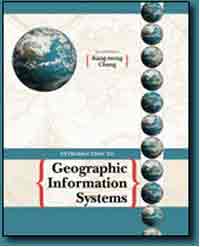

 Geography Information Systems, 2/e This book is designed to provide students in a first or second GIS course with a solid foundation in both GIS concepts and the use of GIS. The book retains the same comprehensive coverage of GIS topics as featured in the first edition. This edition is organized into five parts. Part 1 (Chapters 1 to 7) explains the fundamentals of GIS including coordinate systems, data models, data input, spatial data editing, and attribute data management. Part 2 (Chapters 8 and 9) includes data display and data exploration. Part 3 (Chapters 10 and 11) examines the basic tools for GIS analysis and their applications. Part 4 (Chapters 12 and 13) covers terrain mapping and analysis and spatial interpolation. Part 5 (Chapters 14 to 16) deals with GIS models and modeling, regions, and network and dynamic segmentation. This book stresses both concepts and practices. GIS concepts from fields such as geography, cartography, spatial analysis, and database management explain the purpose and objectives of GIS operations and the interrelationship among GIS operations. For example, a basic understanding of map projection explains why we must project map layers to be used together with a common coordinate system and why we need to input numerous projection parameters. Each chapter in this book is divided into two main sections. The first section covers topics and concepts addressed in the chapter. The second section covers applications, usually with three to five problem-solving tasks. |
 2003 McGraw-Hill Higher Education
2003 McGraw-Hill Higher EducationAny use is subject to the Terms of Use and Privacy Policy.
McGraw-Hill Higher Education is one of the many fine businesses of The McGraw-Hill Companies.